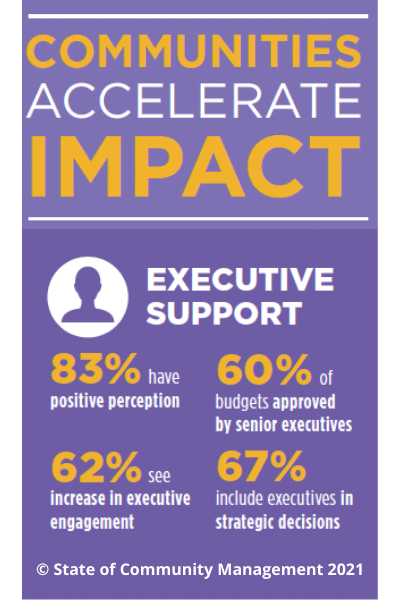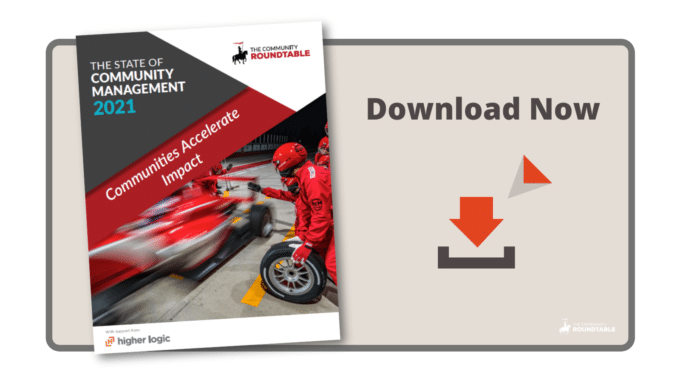Executive interest in community approaches has varied since 2009, with internal and external communities gaining or losing interest as the technology, economic, and the social environment has changed. While interest has grown, it has been slow, inconsistent, and not always sustained. It has been frustrating to see many successful community programs disappear when executives change or companies evolve under new leadership or ownership. It has been exciting to see new applications of community approaches succeed. Interest has ebbed and flowed, slowly growing in appeal but not hitting an inflection point, which relegated communities to a nice-to-have approach in spite of the overwhelming evidence of their value.
Until recently, in terms of community maturity, we had not reached the tipping point and community programs remained vulnerable.
Over the last two years, the place of community in organizations has shifted, with community becoming a more commonly required investment, particularly in the start-up space. The COVID-19 pandemic tipped communities from a nice-to-have to a must-have. Suddenly, it was obvious why organizations wanted to connect employees and customers to each other and the organization via a transparent and accessible digital network.
Since 2020:
- 71% of communities saw their visibility increase
- 67% of them with an added increase in urgency
- 74% of community programs report an increased recognition of their value
- 62% of communities experienced an increase in engagement with 17% of those seeing a significant increase.
The pandemic propelled online communities into the spotlight in a world where it was no longer possible to connect and build relationships at events, in retail environments, at off-site meetings, or in the office.

The visceral new understanding of how online communities can connect employees and customers while expanding access, has galvanized interest, commitment, and involvement from executives. This rapid increase in interest, combined with a maturing community management profession, enabled strategic planning – backed by data, methodologies, success stories, and standardizing roles – and the professional development required to support a broad expansion of community programs and roles. This year’s research uncovers a considerable jump in strategic maturity and funded roadmaps, suggesting that the industry was ready for this pivot and inflection.

